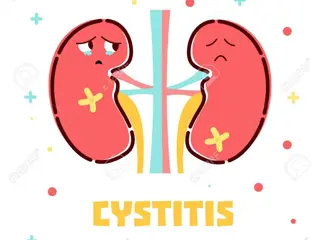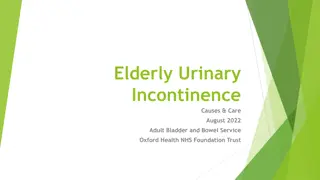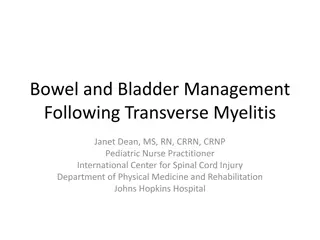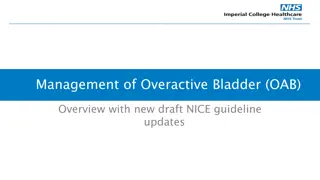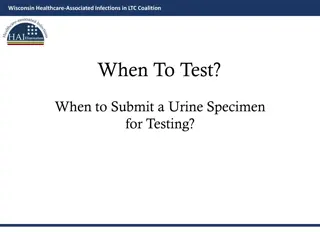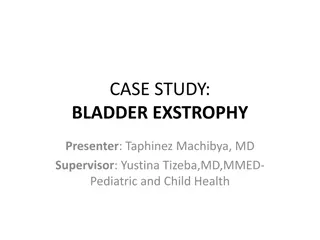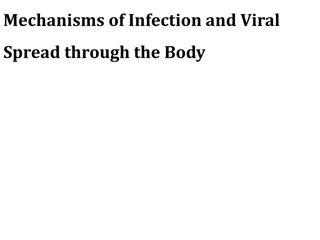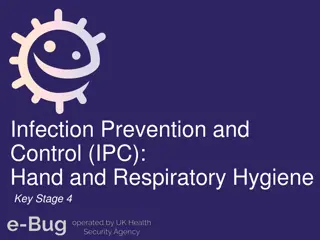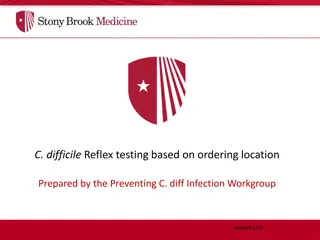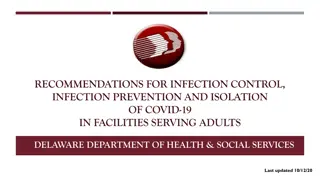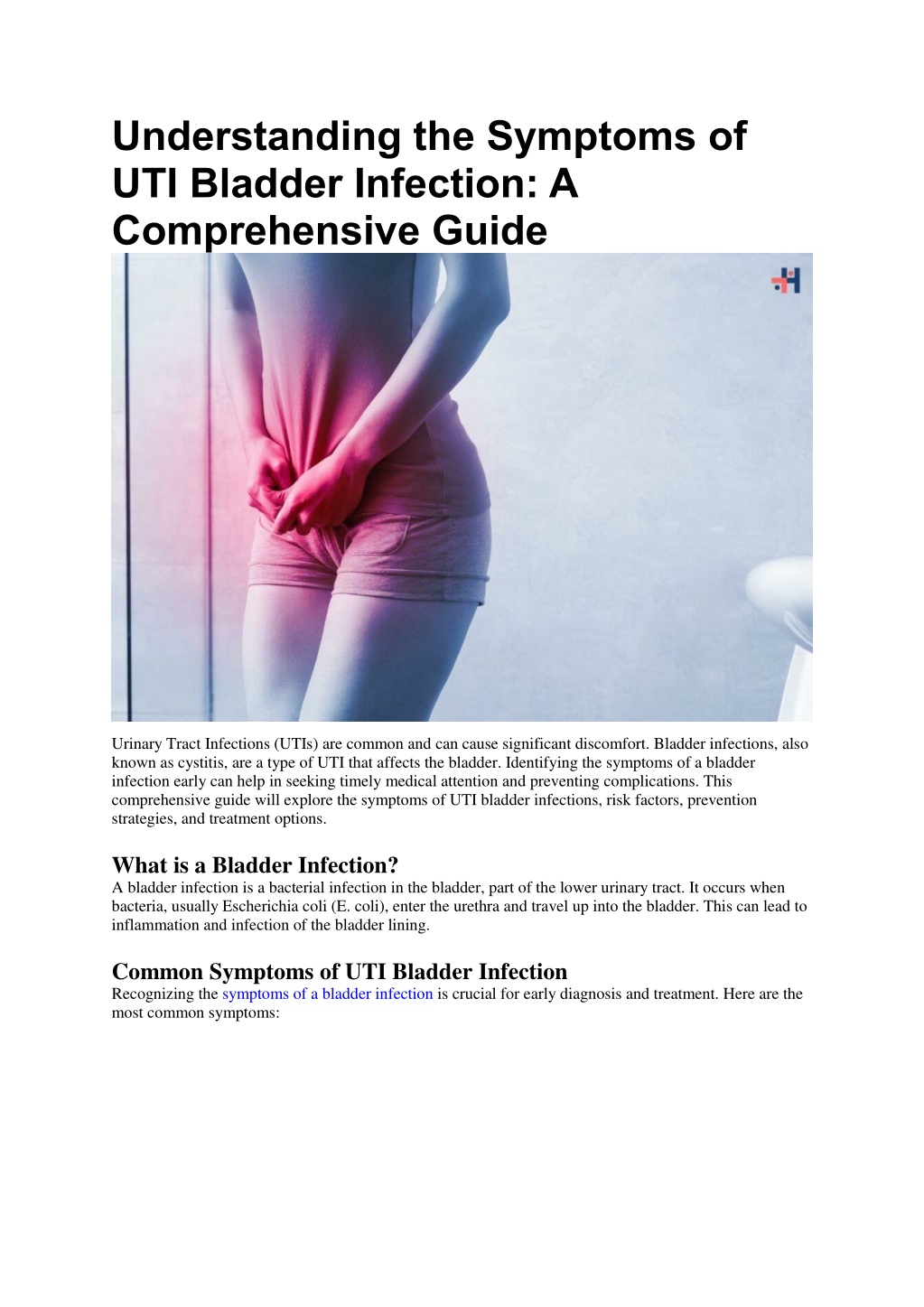
Understanding the Symptoms of UTI Bladder Infection
This comprehensive guide will explore the symptoms of UTI bladder infections, risk factors, prevention strategies, and treatment options.
Uploaded on | 0 Views
Download Presentation

Please find below an Image/Link to download the presentation.
The content on the website is provided AS IS for your information and personal use only. It may not be sold, licensed, or shared on other websites without obtaining consent from the author. Download presentation by click this link. If you encounter any issues during the download, it is possible that the publisher has removed the file from their server.
E N D
Presentation Transcript
Understanding the Symptoms of UTI Bladder Infection: A Comprehensive Guide Urinary Tract Infections (UTIs) are common and can cause significant discomfort. Bladder infections, also known as cystitis, are a type of UTI that affects the bladder. Identifying the symptoms of a bladder infection early can help in seeking timely medical attention and preventing complications. This comprehensive guide will explore the symptoms of UTI bladder infections, risk factors, prevention strategies, and treatment options. What is a Bladder Infection? A bladder infection is a bacterial infection in the bladder, part of the lower urinary tract. It occurs when bacteria, usually Escherichia coli (E. coli), enter the urethra and travel up into the bladder. This can lead to inflammation and infection of the bladder lining. Common Symptoms of UTI Bladder Infection Recognizing the symptoms of a bladder infection is crucial for early diagnosis and treatment. Here are the most common symptoms:
1.Frequent Urination oOne of the hallmark symptoms of a bladder infection is a frequent urge to urinate. This can occur even when there is little urine in the bladder. 2.Burning Sensation During Urination oA burning or stinging sensation when urinating is a common symptom. This discomfort can range from mild to severe. 3.Cloudy or Strong-Smelling Urine oUrine may appear cloudy, dark, or have a strong odor. This can be due to the presence of bacteria, blood, or pus in the urine. 4.Blood in the Urine (Hematuria) oHematuria, or blood in the urine, can be a sign of a bladder infection. The urine may appear pink, red, or cola-colored. 5.Lower Abdominal Pain or Pressure oMany individuals with bladder infections experience pain or pressure in the lower abdomen or pelvic region. 6.Feeling of Incomplete Bladder Emptying oA sensation that the bladder is not completely empty after urination is common. 7.Urgent Need to Urinate oA sudden and strong need to urinate, often accompanied by discomfort, is a frequent symptom. 8.Mild Fever and Fatigue oIn some cases, a mild fever and general fatigue may accompany a bladder infection. However, a high fever is more indicative of a kidney infection. Symptoms of UTI Bladder Infections in Different Populations Bladder infections can present differently depending on age, gender, and other factors. Women Women are more prone to bladder infections due to their shorter urethra, which allows bacteria easier access to the bladder. Symptoms in women often include pelvic pain and pressure. Men Bladder infections are less common in men, but when they occur, symptoms can include rectal pain and discomfort. Men may also experience symptoms related to the prostate.
Children Children with bladder infections may exhibit different symptoms such as irritability, poor appetite, and fever. They may also experience bed-wetting or accidents in toilet-trained children. Older Adults Symptoms in older adults may be less typical and can include confusion, agitation, or sudden changes in behavior. They might not exhibit the classic symptoms of frequent urination or burning sensation. Risk Factors for Bladder Infections Understanding the risk factors can help in preventing bladder infections. Here are some common risk factors: 1.Gender oWomen are more susceptible due to their anatomy. Menopause also increases the risk in older women. 2.Sexual Activity oIncreased sexual activity can introduce bacteria into the urinary tract, raising the risk of infection. 3.Use of Certain Birth Control Methods oDiaphragms and spermicidal agents can increase the risk of bladder infections. 4.Blockages in the Urinary Tract oKidney stones or an enlarged prostate can obstruct urine flow, leading to infections. 5.Weakened Immune System oConditions such as diabetes or other immune-compromising illnesses can increase susceptibility to infections. 6.Catheter Use oIndwelling catheters can introduce bacteria into the urinary tract, increasing the risk of infection. Preventing Bladder Infections Preventing bladder infections involves adopting good hygiene and lifestyle practices. Here are some effective prevention strategies: 1.Stay Hydrated oDrinking plenty of fluids, especially water, helps flush out bacteria from the urinary tract.
2.Practice Good Hygiene oWiping from front to back after using the toilet helps prevent bacteria from spreading to the urethra. 3.Urinate Frequently oAvoid holding urine for extended periods. Regular urination helps clear bacteria from the bladder. 4.Empty Bladder After Intercourse oUrinating after sexual activity can help remove bacteria introduced during intercourse. 5.Avoid Irritants oAvoid using irritating feminine products, such as douches, powders, or sprays, which can disrupt the normal flora and pH balance of the genital area. 6.Wear Comfortable Clothing oOpt for breathable, cotton underwear and loose-fitting clothes to keep the genital area dry and reduce bacterial growth. Diagnosing for the Symptoms of UTI Bladder Infections If you suspect a bladder infection, it s essential to seek medical attention for a proper diagnosis. Here are the common diagnostic methods: 1.Urinalysis oA urine sample is tested for the presence of bacteria, white blood cells, and red blood cells. This helps confirm the infection. 2.Urine Culture oA urine culture identifies the specific type of bacteria causing the infection, aiding in targeted antibiotic treatment. 3.Imaging Tests oIn recurrent or severe cases, imaging tests such as ultrasounds or CT scans may be used to check for abnormalities in the urinary tract. 4.Cystoscopy oA cystoscopy involves inserting a thin tube with a camera into the bladder to examine its interior for any abnormalities. Treatment of Symptoms of UTI Bladder Infection
Bladder infections are typically treated with antibiotics. The choice of antibiotic and duration of treatment depend on the severity of the infection and the patient s medical history. 1.Antibiotics oCommonly prescribed antibiotics include trimethoprim-sulfamethoxazole, nitrofurantoin, and fosfomycin. It s crucial to complete the entire course of antibiotics to ensure the infection is fully eradicated. 2.Pain Relief oOver-the-counter pain relievers such as ibuprofen or acetaminophen can help alleviate pain and discomfort. 3.Increased Fluid Intake oDrinking plenty of fluids helps flush out bacteria and supports the body s natural healing process. 4.Follow-Up Care oIt s essential to follow up with your healthcare provider to ensure the infection has cleared and to discuss any preventive measures. When to Seek Medical Attention While most bladder infections can be treated with antibiotics, certain symptoms require immediate medical attention. Seek medical help if you experience: Conclusion Understanding the symptoms of UTI bladder infections is crucial for early diagnosis and effective treatment. By recognizing the signs, adopting preventive measures, and seeking prompt medical care, you can manage and prevent bladder infections. If you suspect a bladder infection, consult your healthcare provider to receive appropriate care and guidance. Maintaining good hygiene, staying hydrated, and being aware of risk factors can significantly reduce the likelihood of developing bladder infections, ensuring a healthier and more comfortable life. High fever (above 101 F or 38.3 C) Severe pain in the lower abdomen or back Nausea and vomiting Blood in the urine that persists after starting antibiotics Symptoms that do not improve after 48 hours of antibiotic treatment References National Institute of Diabetes and Digestive and Kidney Diseases (NIDDK) Mayo Clinic American Urological Association By following these guidelines and being vigilant about your urinary health, you can prevent and manage bladder infections effectively. Stay informed and proactive to maintain your well-being and enjoy a healthy, infection-free life. Find practical solutions to common challenges through our insightful articles on Healthcare 360 Magazine






